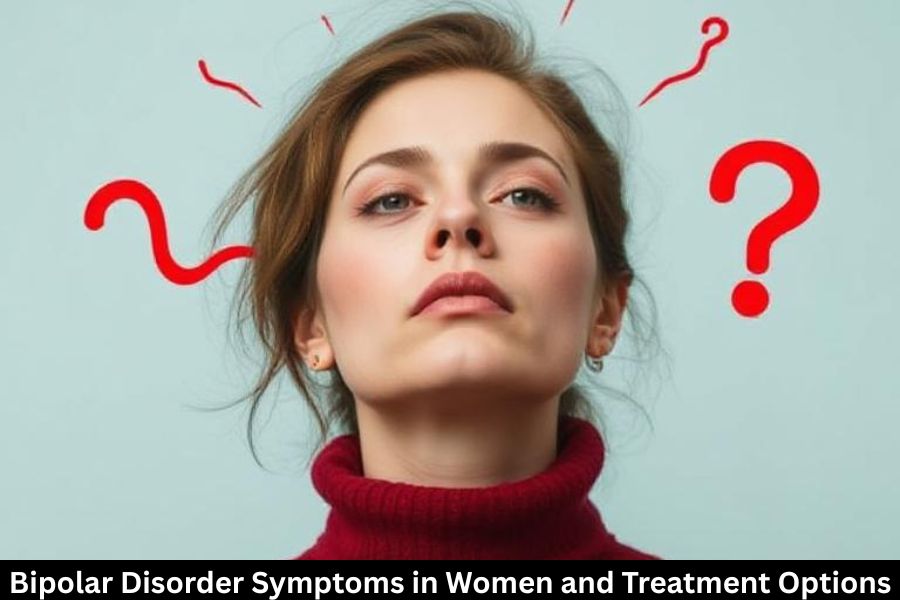Bipolar disorder affects millions worldwide, but for women, the experience can be especially complex. Hormonal fluctuations, pregnancy, and societal expectations can all influence how bipolar symptoms manifest and how treatment works. Understanding bipolar disorder symptoms in women and available treatment options is the first step toward managing emotional well-being and living a balanced life.
Understanding Bipolar Disorder
What Is Bipolar Disorder?
Bipolar disorder is a mental health condition characterized by extreme mood swings that range from intense highs (mania or hypomania) to deep lows (depression). These mood changes can impact energy, behavior, and the ability to function in daily life.
Types of Bipolar Disorder
- Bipolar I Disorder – Defined by manic episodes lasting at least seven days, often accompanied by depressive periods.
- Bipolar II Disorder – Involves hypomanic episodes (less severe than mania) and significant depressive episodes.
- Cyclothymic Disorder – Chronic mood fluctuations that are less intense but persist for two years or more.
How Bipolar Disorder Affects Women Differently
Hormonal Influences on Mood Fluctuations
Women’s hormonal cycles—menstruation, pregnancy, menopause—can amplify mood symptoms. Estrogen fluctuations can affect neurotransmitters like serotonin and dopamine, potentially worsening manic or depressive episodes.
Emotional and Behavioral Patterns
Women often experience more depressive episodes than men, while men are more likely to show manic symptoms. This difference can make diagnosis and treatment approaches vary by gender.
Common Symptoms in Women
Signs of Manic Episodes
- Elevated or irritable mood
- Rapid speech and racing thoughts
- Decreased need for sleep
- Impulsive spending or risky behavior
- Overconfidence or euphoria
Signs of Depressive Episodes
- Persistent sadness or emptiness
- Fatigue and loss of energy
- Changes in appetite or weight
- Feelings of guilt or worthlessness
- Difficulty concentrating
Mixed Episodes and Rapid Cycling
Some women experience mixed episodes, where manic and depressive symptoms occur simultaneously. Rapid cycling—having four or more mood episodes in a year—is also more common in women.
Triggers and Risk Factors
Genetic and Biological Causes
Bipolar disorder often runs in families. Genetic predisposition combined with brain chemistry imbalances can significantly increase the risk.
Life Stressors and Trauma
Emotional trauma, relationship issues, or chronic stress can trigger or worsen episodes. Women facing high emotional burdens are particularly vulnerable.
Postpartum Bipolar Disorder
After childbirth, some women experience postpartum bipolar disorder, a severe mood episode that can involve depression, mania, or psychosis. Early intervention is critical to protect both mother and child.
Diagnosing Bipolar Disorder in Women
Why It’s Often Misdiagnosed
Bipolar disorder in women is frequently mistaken for depression, anxiety, or borderline personality disorder due to overlapping symptoms. Many women seek help during depressive phases, leaving manic episodes unnoticed.
The Role of Mental Health Professionals
Diagnosis involves a thorough evaluation of symptoms, medical history, and family background. A psychiatrist may also conduct mood tracking over time to identify bipolar patterns accurately.
Treatment Options for Women with Bipolar Disorder
Medication Management
Mood Stabilizers and Antidepressants
Medications like lithium, valproate, or lamotrigine help control mood swings. Antidepressants may be prescribed cautiously, as they can trigger mania if not paired with stabilizers.
Hormonal Considerations
Because hormones influence mood, some women may need adjustments in medication during menstrual cycles, pregnancy, or menopause.
Psychotherapy Approaches
Cognitive Behavioral Therapy (CBT)
CBT helps women recognize and change negative thought patterns that fuel depression or impulsive behavior.
Interpersonal and Social Rhythm Therapy (IPSRT)
This therapy stabilizes daily routines—like sleep, meals, and activity—which can prevent mood episodes.
Lifestyle Modifications
- Maintain a consistent sleep schedule
- Eat balanced meals with mood-boosting nutrients
- Avoid alcohol and recreational drugs
- Incorporate mindfulness and yoga to reduce stress
Managing Bipolar Disorder During Pregnancy
Safe Treatments and Precautions
Some medications used to treat bipolar disorder can pose risks during pregnancy. Always consult a psychiatrist and obstetrician to adjust medications safely.
Emotional Support During Pregnancy
Pregnant women with bipolar disorder should have strong emotional and medical support systems to manage mood changes and prevent postpartum episodes.
Building a Support Network
The Importance of Social and Family Support
A strong network of understanding family and friends can help women stay consistent with treatment and reduce feelings of isolation.
Joining Support Groups for Women
Online and local support groups offer safe spaces to share experiences, learn coping skills, and find encouragement from others facing similar challenges.
Long-Term Strategies for Emotional Stability
Long-term stability requires consistent treatment, open communication with healthcare providers, and self-awareness of mood patterns. Keeping a mood journal, setting realistic goals, and prioritizing self-care can make a huge difference in overall well-being.
Conclusion
Bipolar disorder doesn’t define who you are—it’s a part of your story, not your identity. Women with bipolar disorder can lead fulfilling, balanced lives with the right combination of treatment, support, and self-care. Understanding your symptoms and seeking help early are the strongest steps toward emotional and physical wellness.
FAQs
1. What are the first signs of bipolar disorder in women?
Rapid mood swings, impulsive behavior, and episodes of extreme sadness or euphoria are common early signs.
2. Can hormones worsen bipolar symptoms?
Yes, hormonal changes during menstruation, pregnancy, and menopause can influence mood fluctuations.
3. Is bipolar disorder curable?
It isn’t curable but highly manageable with treatment, therapy, and lifestyle changes.
4. What’s the safest treatment for bipolar disorder during pregnancy?
Mood stabilizers like lamotrigine are considered safer options, but every case should be reviewed by a doctor.
5. How can family members support someone with bipolar disorder?
By offering emotional support, encouraging treatment consistency, and creating a stable, judgment-free environment.



